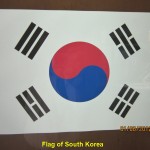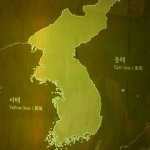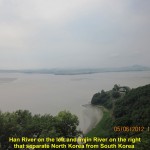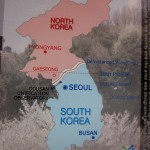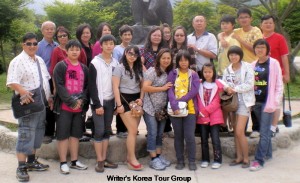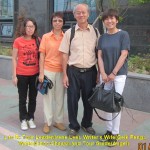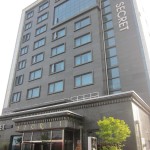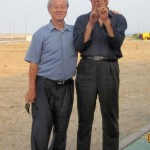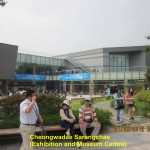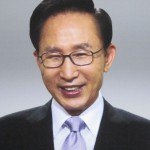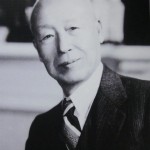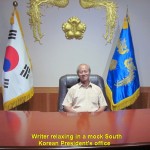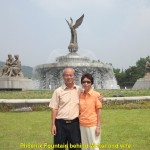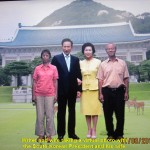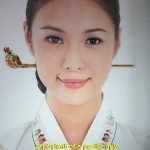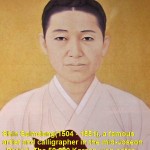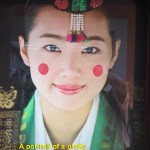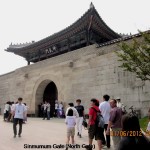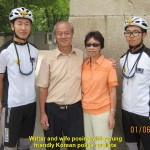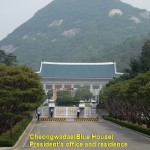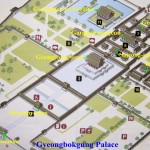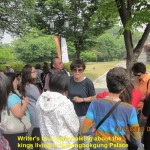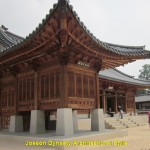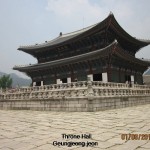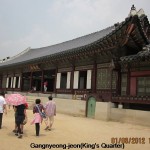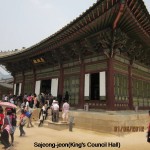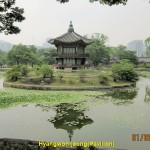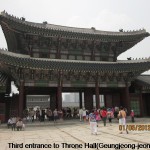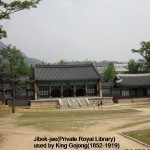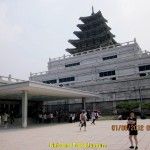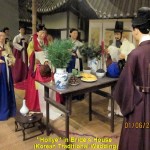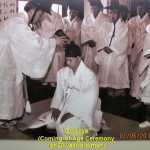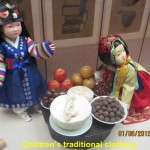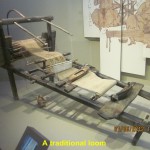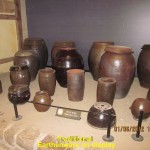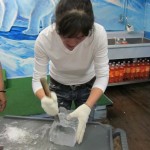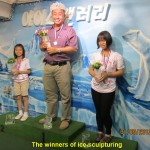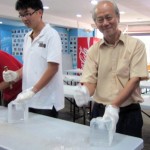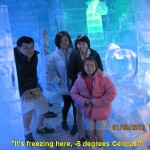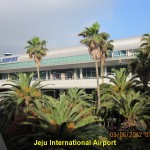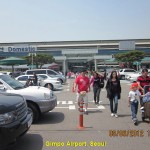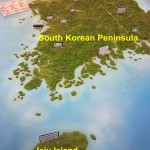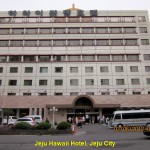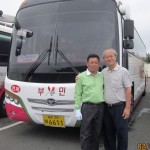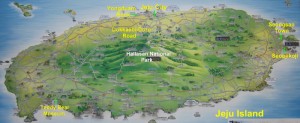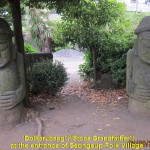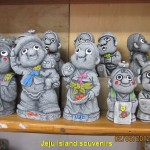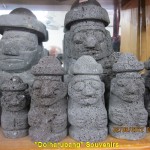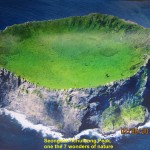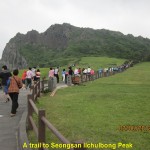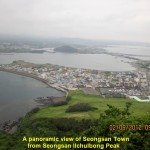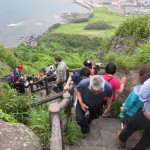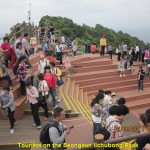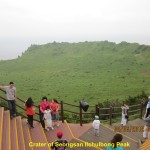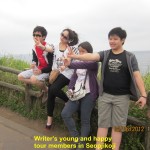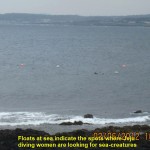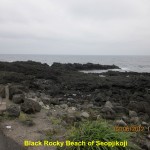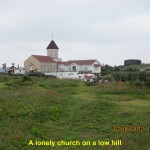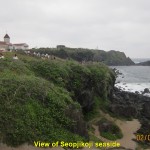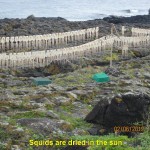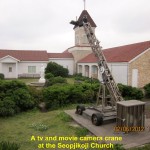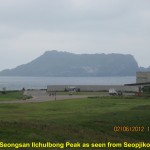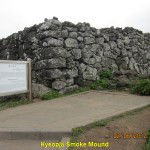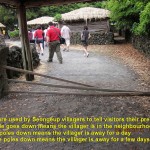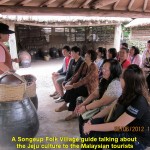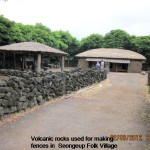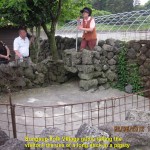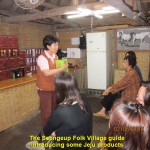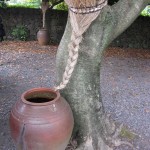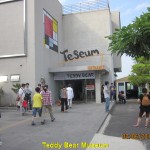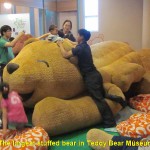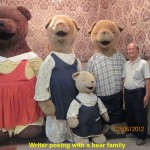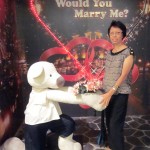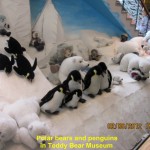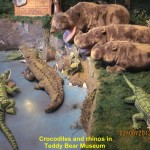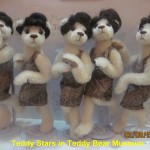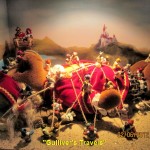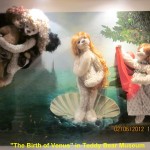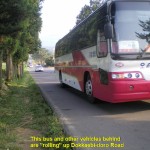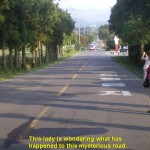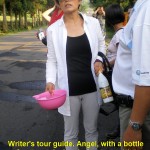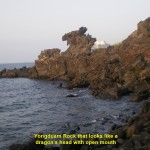South Korea Travel I
South Korea Travel I
Introduction
South Korea is a well-known country in the world. She produces and exports things that carry her own brands, such as Samsung, Hyundai, Kia and LG, just to name a few. I guess many foreign households have at least one of her items, either a car, electronic, electrical gadget, cosmetic, perfume, ginseng, or other product. Furthermore, her Korean dramas, movies, musics and cultural shows are becoming popular, especially, in countries of South-east Asia.
Division of Korea
The Korean peninsula was divided just slightly north of the 38th. parallel into two countries immediately after World War II(1939-1945) ended with the Soviet Union occupying the northern part, North Korea, and the U.S.A. the southern part, South Korea.
In 1948, the two countries formed their own governments with the communist one(the Democratic People’s Republic of Korea) ruling North Korea, and the democratic one( the Republic of Korea) ruling South Korea.
In 1950, Korean War broke out when North Korea invaded South Korea. It lasted for over 3½ years, resulting in a total of 2½ million casualties. An armistice in 1953 ended the war committing both countries to a ceasefire. Although the treaty was signed, North Korea continue to intimidate South Korea, militarily. In spite of North Korea’s unfriendliness, South Korea continues to seek out a peaceful reunification plan with North Korea.
South Korea Tour Diary
To learn more about South Korea, my wife and I joined a small tour-group of Malaysians, left Changi International Airport in Singapore and flew by a large Korean Air plane to that country on 31 May 2012. Irene Lee from Sri America Travel Corp Sdn. Bhd,, a travel agency in Johor Bahru, Malaysia, was our tour leader.
Below is my diary of our unforgettable 8-day trip in South Korea.
Day 1 Thursday 31 May 2012
Flight to South Korea
At 3.00 p.m.(Singapore time), we left Changi International Airport in Singapore, and six hours later, we arrived, safely, at South Korea’s largest airport, Incheon International Airport, on an island that is connected by two bridges to Incheon City on the Korean Peninsula. At the airport, we were greeted by a Korean Chinese tour guide, Angel, who would bring us around in South Korea. Then a Korean tour bus-driver, Chow, brought us to a restaurant in Incheon City for a simple Korean dinner.
After dinner, we retired at a hotel known as Secret Hotel in the city. As the hotel provided free high speed Internet service in my room, I sent an email to my children and loved ones, informing them of our safe arrival in South Korea.
Day 2 Friday, 1 June 2012
Cheongwadae Sarangchae(Exhibition and Museum Centre)
Our actual South Korea tour began today. The first place we visited in the morning was Cheongwadae Sarangchae, an exhibition and museum centre, in Seoul City. It is a place where visitors can learn about the past, present and future of Seoul and the entire nation.
On the 2nd. floor of this centre is the South Korean Presidential Exhibition Hall where visitors can read about the significant events happened during the office of 17 presidents of South Korea. Besides, there is a mock president’s office in a room where visitors can sit on the president’s chair pretending to be a South Korean president, and have their photos taken. In another room, visitors can take a virtual photo together with the present South Korean President, Lee Myung-bak, and his wife.
While I was there, I took the opportunity to ask someone to snap a photo of me alone in the mock president’s office, and another photo of my wife and I together with an image of President Lee Myung-bak and his wife on a large screen in another room.
Cheongwadae (Blue House)
When we came out of the centre we noticed a beautiful garden in front of us. It had a colourful flower garden and a large fountain, Phoenix Fountain, next to it. Then we walked to the right to the North Gate of the famous palace, Gyeongbokgung Palace. Standing in front of this gate which is known as Sinmumum Gate, I saw, not far away, the South Korean present president’s residence-cum-office, Cheongwadae(Blue House), which was heavily guarded by soldiers. Behind it is a majestic-looking hill known as Bugaksan Hill(342m).
Before my wife and I entered the compound of the palace, we met two young friendly Korean cyclist-policemen at the Sinmumum Gate. We chatted in English for a short moment. After taking a photo with them, we followed our tour-guide, Angel, and tour-members for a tour of Gyeongbokgung Palace where Angel would teach us about the history of Joseon Dynasty(1392 – 1897) and its kings.
Gyeongbokgung Palace
The palace was built by King Yi Seong-gye, in 1395, three years after he
established the Joseon Dynasty. When it was completed the king moved the capital of his dynasty from Gaegyeong to Hanyang(now known as Seoul). In 1592 when the Japanese invaded Korea, the palace was completely destroyed by fire. In 1868 it was rebuilt by King Gojong.
In 1895, after the assassination of Empress Myeongseong by Japanese agents, Emperor Gojong with his family fled the palace and sought refuge at the Russian legation. Two years later, he went to another palace known as Deoksugung Palace to stay. That palace was located south of his former one.
During the Japanese colonial rule in Korea(1910 – 1945), many imperial buildings in Geongbokgung Palace were destroyed by the colonialists. In 1990, the South Korean government started restoring the imperial buildings in the palace area to their former glory, as they are the legacies of the Joseon Dynasty and the pride of the nation. Now Geongbokgung Palace is one of the main tourists’ attractions in Korea.
Imperial Buildings
There are many restored imperial buildings in the large compound of the palace. Although we did not have much time to tour the whole place, we managed to see some of the important ones, such as Geungjeong-jeon(Main Throne and Audience Hall), Sajeong-jeon(King’s Council Hall), Gangnyeong-jeon(King’s Quarter), Gyotae-jeon(Queen’s Quarter), Hyangwon-jeon(Royal Pavilion-a hexagonal two-storey pavilion and its vicinity for kings and their immediate families to relax) and Jibok-jae(Private Royal Library-a building of Chinese architechural style used by King Gojong as an art hall, library and audience hall).
National Folk Museum
In the compound of the palace stands a large white building with two tall dark pagodas atop. It is known as National Folk Museum of Korea. It showcases the ancient traditions and cultures of the Korean people. It has a large collection of ancient artefacts illustrating the ancient traditional lifestyle of the Koreans.
More photos of the exhibits that are displayed in the museum are shown below.
Ice Gallery
After a tour of the ancient palace and visit to the museum, we left for another place where we learned ice-carving. Located in the Seoul downtown, it is known as “Ice Gallery” which offers ice-sculpturing lessons and an exhibition of a few ice-sculptures.
When we arrived at “Ice Gallery”, we entered a room where a lady was waiting to teach us ice-sculpturing. To make the lesson more interesting, the teacher made it as a competition. Before it started, she taught us the way of carving a beer-mug out of a small block of ice with a chisel.
During the competition, we tried to produce the most creative, artistic and unique mug. When it ended, three winners with their best-carved mugs were chosen. Unfortunately, mine was not picked for a prize. At the prize-giving ceremony, we had a good laugh when the teacher put an ice-sculptured crown on the champion’s head.
After that enjoyable lesson, we entered a very cold room(-5°C) to see some ice-sculptures, like Eiffel Tower, ancient South Gate, computer, electronic organ, etc. Later we left “Ice Gallery” and went to a restaurant for lunch.
Flight to Jeju Island
After lunch we went to Gimpo Airport and checked in for a flight to Jeju Island. Later, at 6.10 p.m., we flew for an hour to the island. On arrival, we boarded a tour-bus driven by a Korean called Ko Hee Byung. He brought us to a restaurant for dinner and then a hotel known as Jeju Hawaii Hotel. As we had a long tiring day, we slept like a log in the hotel.
Jeju Island
Jeju Island is about 100 km off the southern coast of the Korean peninsula. As it is far away from the peninsula, its ancient island-dwellers were living in isolation. Therefore, they had developed their own culture and language that were entirely different from those on the peninsula.
Breadwinners and “Dolharubang”
In the olden days, Jeju women were the heads of their families or matriarchs, as they were breadwinners. That was the reason Jeju people in olden days preferred girls to boys in their families. Another example of Jeju culture is that, in olden days, Jeju people liked to keep man-sized statues of a grand old man carved from volcanic rocks outside their houses, as they believed that he could protect them from evil spirits and bring them good fortunes. That statue is known as “dolharubang” or “stone grandfather”. Nowadays, figurines of this “deity” are sold in souvenir-shops on the island.
Natural Wonder Heritage
Jeju Island is the largest island in Korea with a length of 75 km and width of 64 km. It is oval in shape and was formed from volcanic eruptions that happened about 2 million years ago. The volcano of height 1950 m, Mt. Hallasan, dominates the island now. This island is blessed with many beautiful natural landscapes which were the result of volcanic activities. In 2007, the whole island was designated as a Natural World Heritage site by the UNESCO.
Day 3 Saturday 2 June 2012
Seongsan Ilchulbong Peak
In the morning, after breakfast, we travelled to Seongsan, a small fishing town, in the east coast of Jeju Island. On arrival at the town, we saw a small volcano of height 180m above sea-level not far away. Known as Seongsan Ilchulbong Peak, this volcanic cone was formed in the sea about 5,000 years ago. When it became extinct, its top sank and formed a shallow crater which looked like a large bowl. Owing to a long period of erosion, the materials from the volcano moved down to the sea and washed to the island forming a tombolo. This tombola joined the foot of the volcano to Jeju Island. In 2007, Seongsan Ilchulbong Peak was designated as one of the seven world wonders of nature.
Trail to the Peak
On arrival at Seongsan, we followed a long trail that went up to the western edge of the crater of the volcano. The last part of the trail was narrow, steep and winding. Furthermore, we had to be careful not to bump into other people who were coming down the volcano.
Volcano Summit
When we reached the summit of the volcano, we had a wonderful feeling: a feeling of achievement in overcoming the difficult climb. We noticed that the crater was shallow and covered with grass. Nobody was allowed to go down the crater, but we could only watch it from a concrete platform built on the western edge of it. Standing on the platform, we could also see a breathtaking sight of the fishing town, beaches, sea and sky, and feel the soothing cool sea-breeze.
After spending several minutes on the peak, we went down the volcano and noticed more tourists making their way to the top. Soon we left Seongsan Town and went straight to a place where it had a black rocky beach. This place was known as Seopjikoji.
Seopjikoji
As we were walking along the beach of Seopjikoji, we could see many coloured floats popping up and down in the distance at the sea. Our tour-guide told us that those floats indicated the positions where the island
women were diving in the water searching for sea-creatures on the sea-floor and rocks, like shellfish, octopuses, squirts, sea-urchins, sea-cucumbers, etc.
“Haenyeos”(Diving Women)
These women are known as “haenyeos”. They wear a diving suit, a pair of flippers and a mask, and are equipped with a sharp curved rod before they dive in the cold water looking for sea-creatures. They will bring up their collections with their bare hands to the water-surface, breathe, quickly, and put them into their nets which are hanging from the floats. Then they will take a deep breath and dive into the water again to look for more sea-creatures.
These diving women are amazing as they can remain in water for 2 or 3 minutes, and dive as deep as 18 meters without oxygen tanks. In summer, they work for 5 or 6 hours at sea, but in winter, as the sea-water is very cold, they can work for a short time.
Breadwinners
In the olden days, “haenyeos” were the breadwinners in their families. While they were diving in the sea, their men were doing household chores at home. But, nowadays, men are working, too. They work in food and beverage shops, restaurants, hotels, bus-drivers, taxi drivers, deep-sea fishermen, etc. bringing home extra incomes. This is made possible by the frequent influxes of tourists from the Korean peninsula and foreign countries to the beautiful island of Jeju all year round.
The number of “haenyeos” on the island has dwindled a lot. In 1950s, there were about 33,000 of them. As more job opportunities are available on the South Korean peninsula and the island, the number of woman-divers decreases to around 5,000 with about 60% of them in the 60-80 age group. Surprisingly, a few of them who are over 80 years old are still working as “haenyeos”.
[To see photos of these amazing Jeju diving women(“haenyeos”), please click on this website: http://www.kuriositas.com/2011/11/haenyu-indomitable-diving-grandmas-of.html ]
Lonely Church
As we continued walking along the Seopjikoji rocky coastline, we saw squids hanging on long strings on the beach and a lonely church standing on a hill. The sight of the land and sea was beautiful. That place has been a well-known location for shooting Korean TV dramas and movies.
We walked to the church. While we were standing in its vicinity we could see both the spectacular land and sea views. Furthermore, we saw Seongsan Ilchulbong Peak in the distance.
Near the church was a large rectangular mound of volcanic rocks known as hyeopja smoke mound. According to the information on a board standing next to it, there were 38 such mounds on Jeju Island. In the olden days, they were used for communication and as a look-out for enemies’ ships. Smoke was used during the day and beacon during the night. But during cloudy or raining days, mound-keepers had to run to a place to deliver an important news.
Seongeup Folk Village
After that relaxing walk in Seopjikoji, we went for lunch at a restaurant near Seongeup Folk Village. After the meal, we were greeted by a local village-guide. She brought us to a gate in the village and told us about the three poles across it.
“To let the villagers know that the dweller of a house nearby is in the neighbourhood, he/she will put down a pole,” explained the guide. “If the dweller wants to be out for the whole day, he/she will put down two poles. But, if he/she wants to be away for more than a day, he/she will put down all the three poles,” continued the guide.
Then the guide brought us round to see a few thatched-roof houses with gardens surrounded by low walls of black volcanic rocks. In a hut, she told us about the tradition and culture of the Jeju villagers with a few jokes thrown in.
Black Pigs
After that interesting talk, the guide brought us to the back of a house to see a small enclosure surrounded by low walls of volcanic rocks. It was empty then. She told us that it was used for rearing black pigs. The owner of that “pigsty” and his family would squat on a raised platform in a corner and released their “loads” through a small hole in the middle onto the ground for the pigs to eat. They would squat there with a long stick in their hands and strike the pigs with it, if they tried to disturb them. When she demonstrated the way a villager would do his/her “business” there, we had a good laugh.
Before we left the village, the guide brought us to a room and introduced to us some Jeju natural products, such as honey and tonics made from the bones of horses that could strengthen human bones.
Teddy Bear Museum(or Teseum)
The next place we were going to visit was Teddy Bear Museum(or Teseum) located in Jungmun in the south of Jeju Island. It is a place where visitors will feel young again when they see many stuffed toys of animals, especially bears, inside the museum.
It was reported that the 26th. president of the United States of America, Theodore Roosevelt(1901-1909), was nicknamed by his people, Teddy Bear, because of his refusal to shoot at young bears while hunting. For this reason, the museum is named after the President’s nickname, Teddy Bear Museum.
When we entered the 1st. floor of the museum we were amazed to see so many kinds of stuffed African animals “roaming” in the “Safari” on our right, and polar creatures, like polar bear and penguins in the “North Pole Zone” on our left. On the 2nd. floor, there were many stuffed bears of different sizes and heights, and wearing different kinds of clothes displayed at different places, like “Aqua Zone”, “Amazon”, “Flower Bear”, “Three Bears’ Home”, “Art Gallery”, “Miniature Zone”, and “Biggy Bear”.
Dokkaebi-Doro Road(Mysterious Road)
Having spent a short time in Teddy Bear Museum, we left and travelled north-east to a mysterious road called Dokkaebi-Doro Road. When our bus arrived at the lower part of the road, the driver put its gear in its neutral position. It was supposed to stop and remain stationary, instead, it was moving slowly up the gentle slope of the road. Vehicles behind and in front of our bus were moving uphill, too.
“How can this happen? It defies gravity!” everybody on the bus was asking.
Unusual Phenomenon
After our bus had moved uphill for a distance of 200 metres, the driver drove it to a parking lot. Coming out of the bus, we followed our tour-guide, Angel, to the mysterious road. Then Angel went to a roadside-stall and came back with a bottle and bowl of water. When she put the bottle on the road, we were surprised to see it rolling uphill, slowly. As though we were not convinced, she poured the bowl of water into a narrow shallow channel in the middle of the road and, amazingly, it flowed, slowly, uphill, too. All of us could not believe with our eyes, as the bottle and water had defied gravity. None of us could explain the phenomenon then. Some even believed that it was a ghost road!
Explanation
(Later, I read about the mysterious road in Wikipedia. It explains, “A gravity or magnetic hill is a place where a slight downhill slope appears to be an uphill slope due to the layout of the surrounding land, creating an optical illusion that water flows uphill or a car left out of gear will roll uphill, ….” )
Yongduam Rock
Later, we left the mysterious road and went to a rocky beach located north of Jeju City. On arrival at the place, we went down a cliff and saw,
clearly, a rock in a shape of a dragon head with its mouth open. They called it Yongduam Rock.
There are many local stories about the rock. One of them says that a dragon which stole a precious jade from Mt. Hallasan was shot down by an arrow from the mountain guardian. It fell into the sea, but its head was above the water and turned to rock. According to another story, a white horse which dreamed of becoming a dragon and flying to the sky was caught by a soldier. Later, it turned into a rock that was in the shape of a dragon head.
Having seen the rock, we went to a Jeju City restaurant for dinner and returned to our hotel to rest.
(continued on South Korea Travel II)
Written by Choo Chaw, Kluang, Johor, Malaysia
Comments
One Comment on South Korea Travel I
-
Johnny Swee on
Thu, 16th Aug 2012 12:36 am
Hi Uncle Choo ,
Very enjoy to read so detailed article and photos attached for last Korea trip where we got to know each other from unknown. Stayed together, ate together most of the meals daily and visited and enjoyed all the tour places.
This is a lovely and memorable trip with all the members who are humble and kind to each other.
Hope to have a trip with you again in another country in the coming year .
Best reagrds,
Johnny Swee & Family
Tell me what you're thinking...
and oh, if you want a pic to show with your comment, go get a gravatar!

